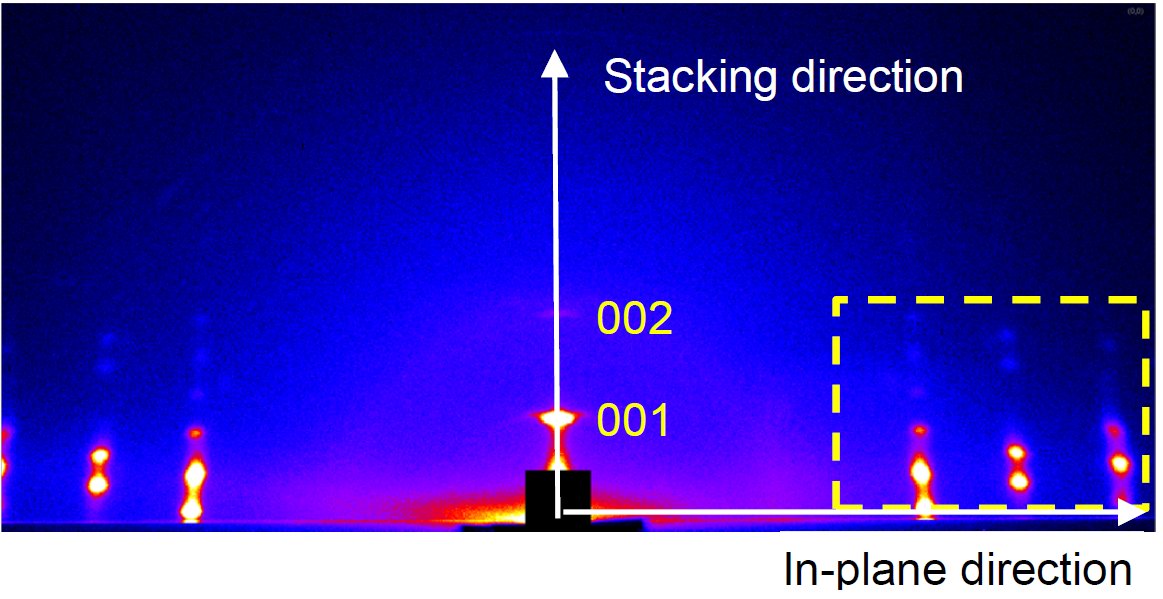Application Note B-XRD2023
Introduction
The grazing incidence wide angle X-ray scattering (GI-WAXS) technique, where an incident X-ray beam strikes a specimen surface at a very shallow angle, is often employed for the measurement of ultra-thin film specimens, since their very weak signals can be effectively observed this way. The combination of the 2D-SAXS/WAXS attachment with an aperture slit and a 2D detector allows clearly resolved 2D diffracted images to be obtained using a general X-ray diffractometer with a line-shaped incident beam (Figure 1).
Measurements and results
Pentacene is a popular organic material for electronics. Pentacene is known to form a thin film phase that is different from the bulk phase when the film is very thin. Figure 2 shows the GI-WAXS image of a 50 nm-thick pentacene thin film (incident angle: 0.12˚, exposure time: 30 min). The diffracted X-rays caused by the periodic structure in the stacking direction were observed as spots along the vertical axis of the GI-WAXS image. These spots were attributed to the pentacene 001 and 002 reflections. However, the phase could not be identified as bulk or thin film based on these spots because the c-axis lengths of the pentacene bulk and thin film phases are similar.
In the bottom part of the GI-WAXS image, diffracted X-rays caused by the periodic structure in the in-plane direction were observed. Figure 3 shows the results of reciprocal space simulation of pentacene thin film and bulk phases, along with a close-up view of the GI-WAXS region indicated in Fig. 2. A comparison with the simulation results revealed that these diffracted X-rays came from the thin film phase.

Figure 1: GI-WAXS geometry with a 2D detector.

Figure 2: GI-WAXS image of a 50 nm thick pentacene thin film.

Figure 3: (Left) Reciprocal space simulation of pentacene (001 preferred orientation) bulk and thin film phases and (Right) close-up view of GI-WAXS image.
Reference
S. Kobayashi and K. Inaba: Rigaku Journal (English version), 32 (2016), No.2, 1-5.

